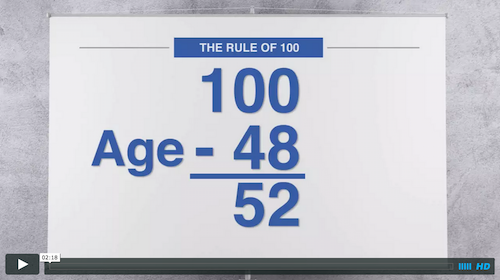Fifteen years ago, the Social Security Administration (SSA) launched the Social Security Statement, a tool to help Americans understand the features and benefits that Social Security offers. Since then, millions of Americans have reviewed their personalized statements to see a detailed record of their earnings, as well as estimates of retirement, survivor, and disability benefits based on those earnings. Here’s how to get a copy of your statement, and why it deserves more than just a quick glance, even if you’re years away from retirement.

Source: http://www.socialsecurity.gov/socialmedia/photoblog/posts/2013/march.html
How do you get your statement?
In September 2014, the SSA began mailing Social Security Statements to most workers every five years. Workers attaining ages 25, 30, 35, 40, 45, 50, 55, and 60 who are not receiving Social Security benefits and are not registered for an online account will receive a statement in the mail about three months before their next birthday. Workers older than age 60 will receive a statement every year.
But why wait? A more convenient way to view your Social Security Statement is online. First, visit socialsecurity.gov to sign up for a personal my Social Security account (you must be 18 or older to sign up online). Once you have an account, you can view your Social Security Statement anytime you want, as often as you want.
Check your estimated benefits
Your Social Security Statement gives you information about retirement, disability, and survivor benefits. It tells you whether you’ve earned enough credits to qualify for these benefits and, if you qualify, how much you can expect to receive. As each Social Security Statement notes, the amounts listed are only estimates based on your average earnings in the past and a projection of future earnings. Actual benefits you receive may be different if your earnings increase or decrease in the future. Amounts may also be affected by cost-of-living increases (estimates are in today’s dollars) and other income you receive. Estimated benefits are also based on current law, which could change in the future.
Retirement benefits
Although Social Security was never intended to be the sole source of retirement income, retirement benefits are still very important to many retirees. Your statement shows estimates of how much you can expect to receive if you begin receiving benefits at three different ages: your full retirement age (66 to 67, depending on your birth year), age 62 (your benefit will be lower), or age 70 (your benefit will be higher). When to start claiming Social Security is a big decision that will affect your overall retirement income, so if you’re approaching retirement, this information can be especially useful. But even if you’re years away from retirement, it’s important to know how much you might receive, so that you can take this information into account as you set retirement savings goals.
Disability benefits
Disability is unpredictable and can happen suddenly to anyone at any age. Disability benefits from Social Security can be an important source of financial support in the event that you’re unable to work and earn a living. Check your Social Security Statement to find out what you might receive each month if you become disabled.
Survivor benefits
Survivor protection is a valuable Social Security benefit you may not even realize you have. Upon your death, your survivors such as your spouse, ex-spouse, and children may be eligible to receive benefits based on your earnings record. Review your Social Security Statement to find out whether your survivors can count on this valuable source of income.
Review your earnings record
In addition to benefit information, your Social Security Statement contains a year-by-year record of your earnings. This record is updated whenever your employer reports your earnings (or if you’re self-employed, when you report your own earnings). Earnings are generally reported annually, so keep in mind that your earnings from last year may not yet be on your statement.
It’s a good idea to make sure that your earnings have been reported correctly, because mistakes do happen. You can do this by comparing your earnings record against past tax returns or W-2s you’ve received. This is an important step to take because your Social Security benefits are based on your average lifetime earnings. If your earnings have been reported incorrectly, you may not receive the benefits to which you’re entitled.
What if you find errors? The SSA advises you to call right away if any earnings are reported incorrectly. The SSA phone number is 1-800-772-1213 (TTY 1-800-325-0778).

Source: http://www.facethefactsusa.org/facts/male-retirees-get-bigger-social-security-checks
Important Disclosure















